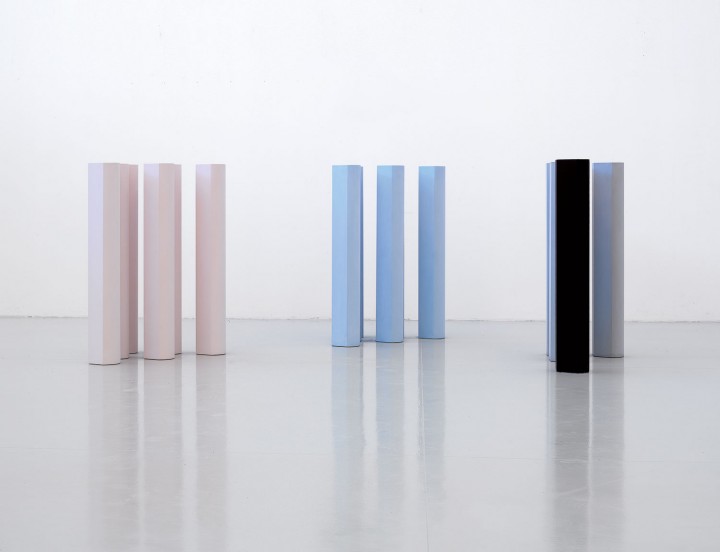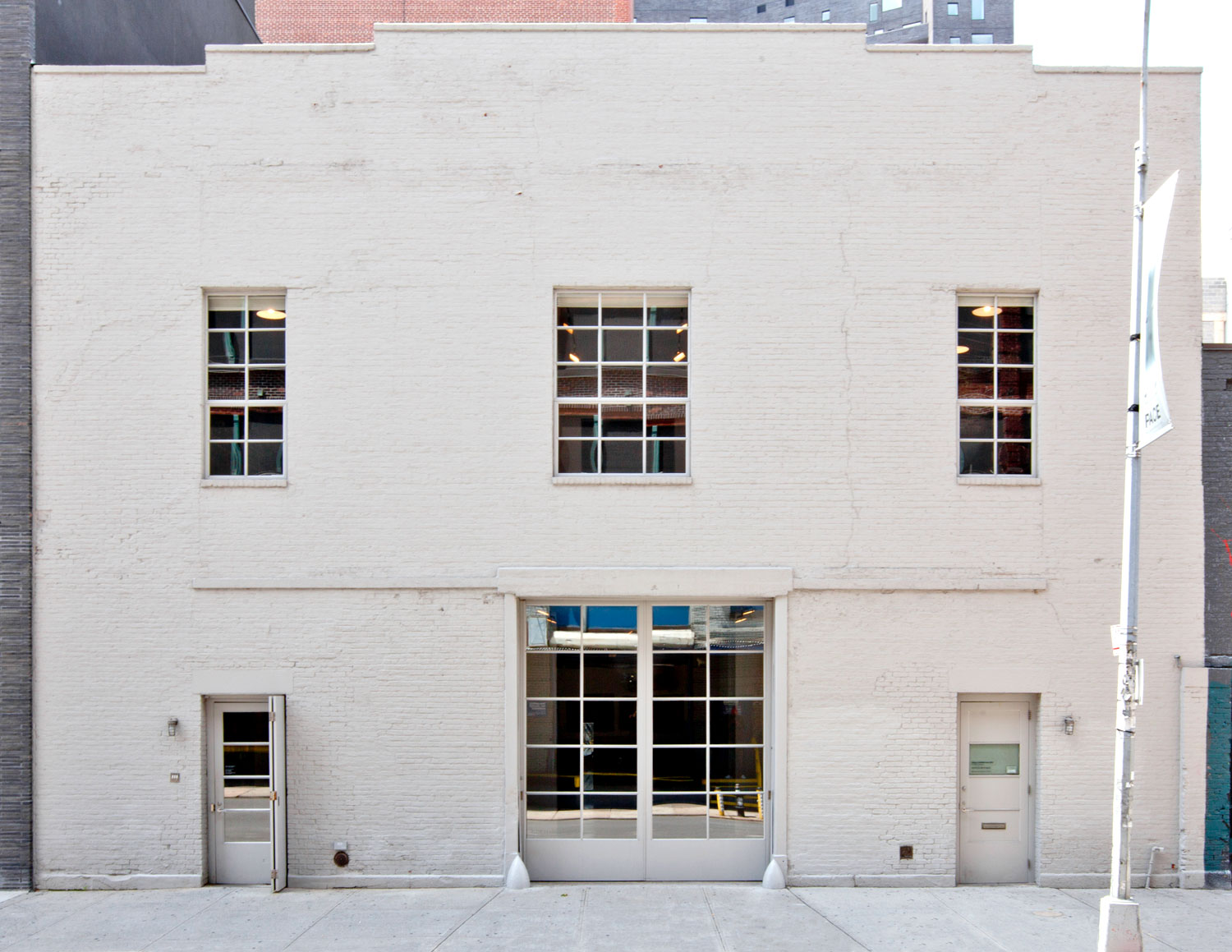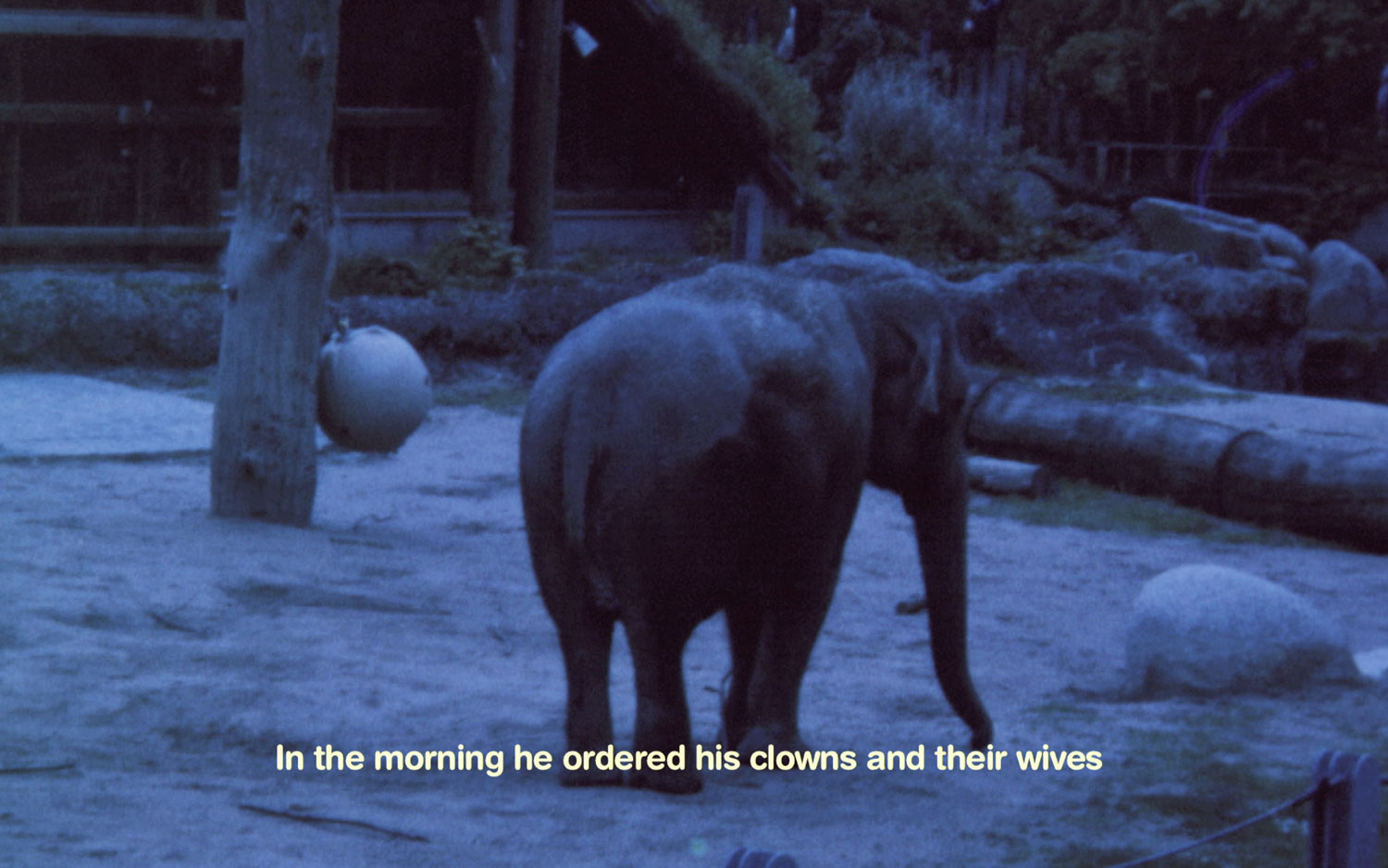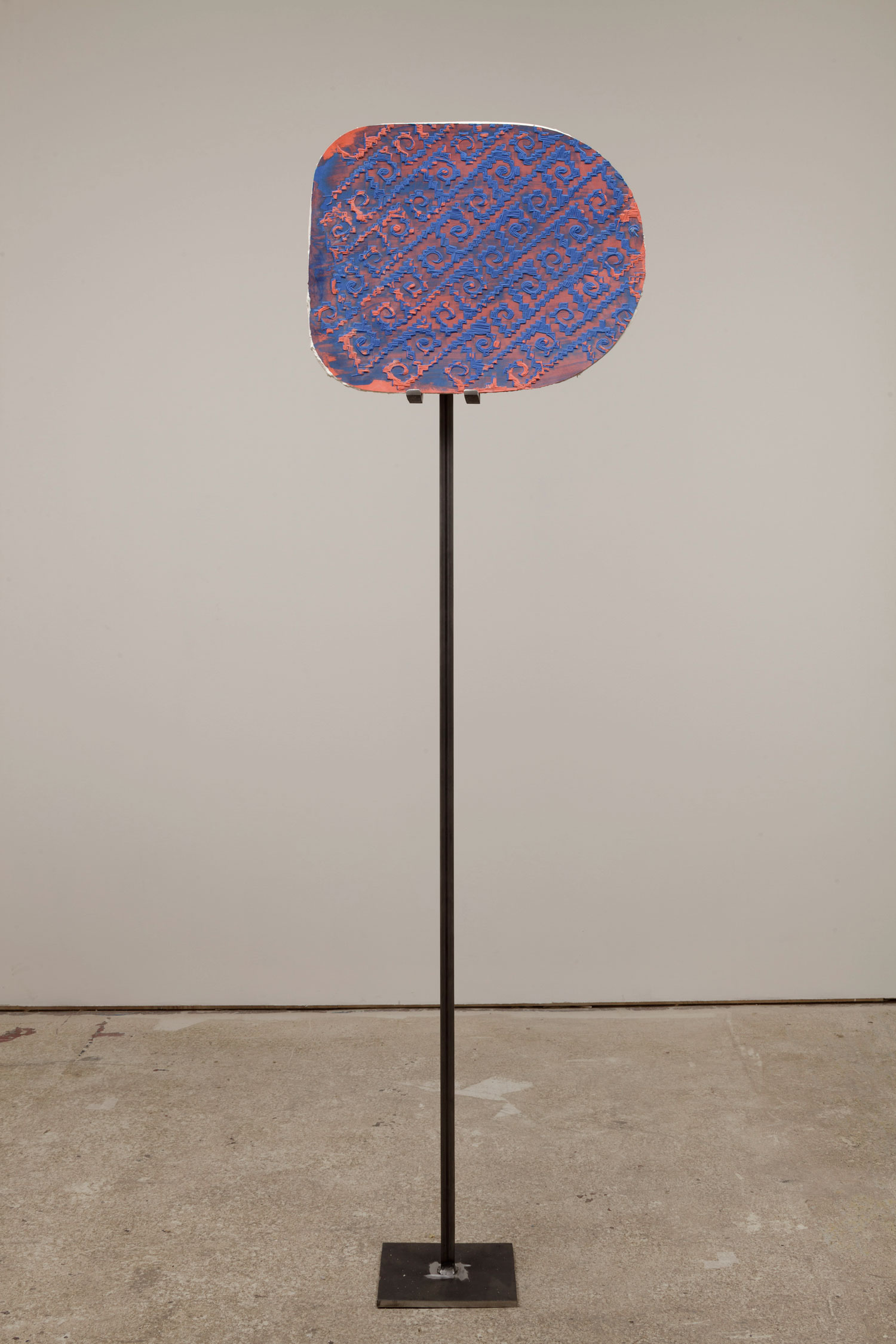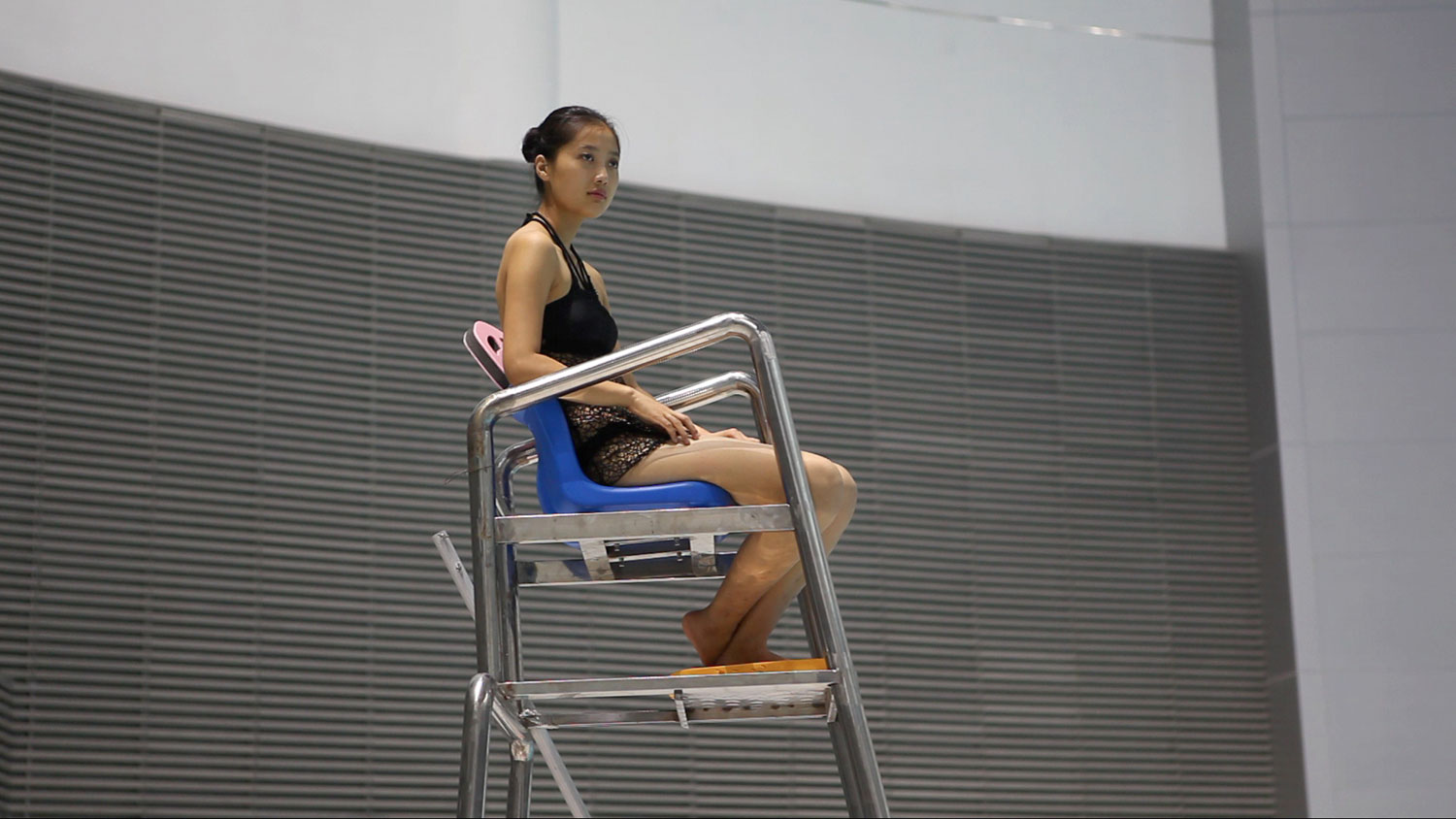In May of 2014 I traveled to Naples, Rome and Turin with the purpose of visiting Ettore Spalletti’s three-part retrospective exhibition “Un giorno così bianco, così bianco.” An introduction to each of the three presentations came in the form of a photograph of the artist’s early performance E porgere, chissà da quale tempo, quanto rimane vivo (1976). In this work, in the context of a solo show at Galleria Pieroni in Pescara, Spalletti removed two cobbles from the flooring of the gallery’s exhibition space and replaced them with plaster casts, one light blue and the other a skin-tone blush. On a daily basis he gently sanded their surfaces and distributed the resulting dust along their perimeter. This prologue aside, the three exhibitions highlight a number of specific idiosyncrasies that typify the museum spaces that host them, turning the joint-venture project into a barometer for the outlook of contemporary art institutions in Italy today.

Wandering through each venue, the title of John Fante’s künstlerroman Ask the Dust (1939) exemplifies my attempts to decode the exhibitions. Indeed, dust thoroughly permeates “Un giorno così bianco, così bianco”: it is Ettore Spalletti’s shadow, a Giorgio Morandi–like belief in time and space as abstract, intellectual paradigms that coexist within the work. But dust also speaks to the environmental quality of these museums — the tepid and rarefied light that enters through the windows of Álvaro Siza Vieira’s restoration of the MADRE in Naples; or the impalpable, virtual flavor of Zaha Hadid’s architecture for the MAXXI in Rome; or the obsolete, sparse galleries of the GAM in Turin — and their sometimes actually dusty corners, the faint embodiment of a diffuse neglect that touches all Italian institutions due to a lack of funding that affects the entire cultural field. And it reveals something about the curatorial ethos behind the exhibition programs, too often celebrating the undisputed prestige of masters while too rarely committing to an effective critique that might jeopardize an artist’s practice or seek complexity in the restitution of their oeuvre.
“Un giorno così bianco, così bianco” was orchestrated by Spalletti himself (in dialogue with Danilo Eccher at GAM, Anna Mattirolo at MAXXI and Andrea Viliani and Alessandro Rabottini at MADRE). The artist compiled three distinct checklists, choosing among historical and recent pieces, and even conceiving a number of works specifically for each presentation. He also oversaw the catalogue published for the occasion, delivering a massive volume that is neither a true artist’s book nor a catalogue raisonné. Although it is another example of Spalletti’s certainly enthralling inquiries into the editorial medium, it is in my opinion a missed opportunity for researching and editing a volume that could help illuminate this complex practice in terms of its historicization and legacy.
In Naples, Rome and Turin I searched for overarching clues to this comprehensive and far-flung presentation. Ettore Spalletti has always lived and worked in his hometown, a tiny village in the hills of Abruzzo, a region in Central Italy; and that landscape, a limbo between the seaside and the mountains, has always been a primary source of inspiration. Spalletti is a solitary artist who rarely travels to art industry hotspots in order to partake in the debate around contemporary art; and despite his famed affability, he is far from having significant influence within our local art system. He has never chased contemporaneity, and has always privileged an expanded durational sensibility that nowadays can be endured only in intimacy. In the above-mentioned catalogue, Andrea Viliani, director of MADRE, writes: “[In the exhibition] contemporaneity is rejected as an error, a contrivance or a limitation, and replaced by the intimacy of nuances, the definition of the corners, the cuts, the folds that turn the work (or the book that documents it) onto itself. Because it is the overall temporality of the work, and not its contemporaneity, that expresses the permanent revolution of the gaze on it by the visitor, just as it was the gaze of the artist during its composition” [Andrea Viliani, “Interstitiality and Duration. Datum and Nuance,” in Ettore Spalletti, Electa, 2014, p. 189].
The Naples presentation is in fact the most convincing. Besides the display spanning fifty years of the artist’s production, including rarely seen early works from the 1960s, I had the feeling that the city and the exhibition were closely tied in their mutual understanding of history as rooted ineluctably in the eternal present; the only inconsistency in the annihilation of time I experienced in both everyday Naples and Spalletti’s constellation of works at the museum is that the latter was engulfed by silence — a silence that can in any case be reconciled with the white noise of the city. The surfaces of Spalletti’s works are as arid yet shimmering as the “skin” of Naples: just as the artist adds pigment to plaster and gently sands the impasto in order to invest color into matter and to disperse color into light, so one can polish the surface of the city and always find vibrancy — and of course dust.
In Rome and Turin, Spalletti’s art failed to bridge a certain genius loci of the two cities. Within these environments identified with bureaucracy and industrialization, in order to become attuned to the atemporality of the works, I found myself trapped in a self-induced religiosity — in other words, an exercise in pure belief. I realized that the hyper-materiality of the MAXXI building translates into a most unfortunate space for contemplation. Despite the artist’s clever use of rather hieratic color fields as a means of engaging the virtual reality-like character of the museum — the exhibition views have the disorienting but also intriguing quality of digital renderings — the building’s infrastructure intrudes continually, making the exhibition not unlike one of those pathetic airport art displays that expect deep introspection from a harried traveler.
At the GAM, the exquisite museum collection that surrounds Spalletti’s exhibition features modern masterpieces of innovative exhilaration and history paintings rooted in the political and ethical role of art in society. In this context Spalletti’s discourse might seem a mere acupunctural commentary on the search for beauty throughout the history of art… If this attitude seems slightly trenchant, it is only because I am trying to point out some black holes in an exhibition that, at the end of the day, is probably the most significant collaboration among Italian institutions in decades, all in the service of an artist who has developed a unique language in the history of our country’s art.

